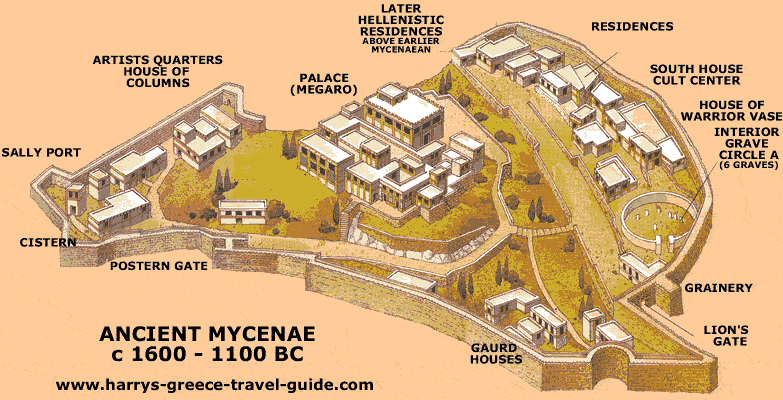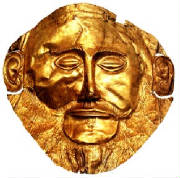|
Archealogical Discoveries
A great deal of what Historians have learned about the first Greek civilizations comes from the excavation
of the Mycenaean cities themselves. Clay tablets from Pylos and the Minoan city Knossos show the organization of the Greek
kingdoms was hierarchial. The king of a city or region was known as the wanax. A chain of command follows that includes priests
and military officials. Mycenaean ruins are characterized by massive stone fortifications around the entire city. Inside the
palace itself, a central room called the megaron was the focus of the construction and was used for many different occasions.
Below is a diagram of the excavated site.

Two shaft graves found at Mycenaean sites give us a great picture of Mycenaeans fast rise
to power. The earlier grave shaft contained weapons and pottery but little else of value. It is not
shown in the diagram above because it was built outside the city walls. Grave shaft A shown in the diagram comes from a later
period of immense prosperity for the Mycenaean elite. Excavations revealed a treasure trove of weapons, gold jewelry, valuabe
trinkets, as well as intricate pottery. Below is a gold mask found in one of the earlier grave shafts.

Religion
Although it is difficult to know for certain the origins of Mycenaean religious beliefs with what little
written evidence their is, we do know they were polytheistic. That is, they worshiped more than one god or godess. We also
know at some point Minoan gods and goddesses were adopted by the Mycenaean's. Many of the gods and godesses from Mycenaean
tablets have the same names as those of later Greek religion.
Mysterious End
|

